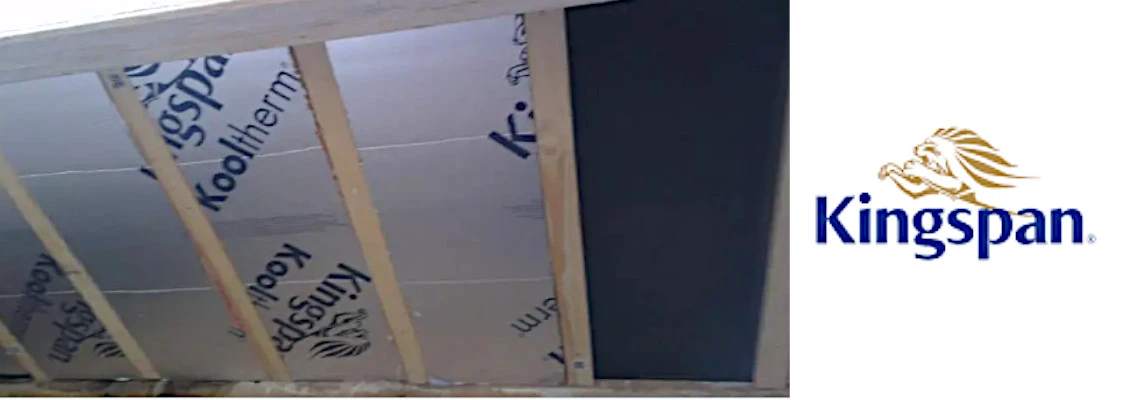
HOW TO INSTALL A KINGSPAN BOARD BETWEEN ROOF RAFTERS?*
Installing Kingspan or Xtratherm insulation between roof rafters is a crucial step in ensuring an efficient and well-insulated roof. However, improper installation can have severe consequences, leading to discomfort and the need for insulation replacement. In this blog post, we will guide you through the correct process of installing Kingspan boards between roof rafters. By following these steps, you can avoid potential problems and achieve optimal insulation performance for your roof. So, let's dive in and learn how to install Kingspan boards with precision and effectiveness.
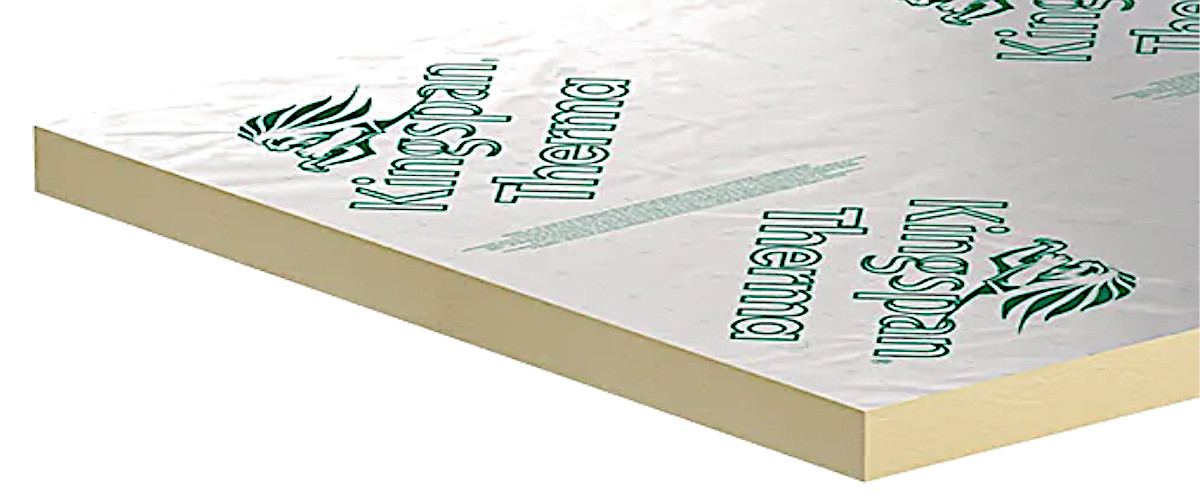
CAN YOU PUT KINGSPAN BETWEEN ROOF RAFTERS? / INSULATION BETWEEN RAFTERS BUILDING REGULATIONS
Yes, you can definitely install Kingspan boards between roof rafters. Kingspan boards, particularly those with a phenolic core, are specifically designed for insulation purposes, including installation over, under, and between pitched roof rafters in lofts and attics. It's important to note that you should always insulate between and above the rafters. This means that an appropriate thickness of 170mm should be placed between the rafters, and a 100mm layer should be in contact with the rafters level.
By following this principle, you can achieve the required U-value for pitched roofs, which is 0.18 W/m2K.
HOW DO YOU FIT A KINGSPAN BETWEEN RAFTERS?
There are 3 main methods for fitting Kingspan boards between rafters.
The most popular method is the compression fit method. It involves precisely cutting the boards to the required size between the rafters and then compressing them tightly between the rafters. This process can be time-consuming and requires precision. However, it is an excellent method for minimising thermal bridging.
The second method, which is slightly less popular, involves securing the Kingspan boards with a minimal gap (usually <10mm) and then filling the gap with low-expansion foam. This method is the quickest and does not require high precision. Any irregularities in cutting the board can be compensated for by using the foam filler.
The third method of installing Kingspan boards involves cutting the boards to fit between the rafters and then securing the panels with screws or galvanised nails across the rafters. This method prevents the boards from sagging and is relatively easy, but it requires the additional purchase of cross-joist fixings. The last sections of the roof near the masonry wall should be installed using the compression fit method. This means cutting the Kingspan boards precisely to fit the remaining space between the rafters and tightly compressing them in place.
HOW DO YOU HOLD INSULATION BETWEEN RAFTERS?
If you're installing insulation between rafters, you're probably wondering how to secure the insulation and keep it in place. To ensure the boards stay in place between the rafters, it's best to press them in using a piece of wood slightly wider than the board itself. Before that, make sure to cut the board to an exact measurement. It's also beneficial to cut the board at a slight angle of 3-5 degrees, which will facilitate its insertion between the rafters.
Another method of supporting the boards between the rafters is by using string or twine. However, this method is more commonly used to support rolled insulation rather than boards. If no other options are available, this method is the only choice.
A reliable way to support the boards between the rafters is to use galvanised nails or screws and drive them into the rafters at a 45-degree angle or perpendicular to the face of the board. Only 4-6 screws or nails are typically sufficient to keep the board securely in place.
IS IT OK TO PUT INSULATION BETWEEN ROOF RAFTERS?
If you have decided to create a warm roof, which means preventing low temperatures within its structure, using insulation between rafters is highly recommended. This method allows for optimal use of space and enables the use of finishing materials, such as plasterboard, directly onto the rafters. However, it's important to consider the requirements set by building regulations, which state that a roof should achieve a U-value of 0.018, requiring approximately 270mm of insulation. It is often impractical to achieve such thickness solely between the rafters. Therefore, insulation is typically installed between the rafters, and an additional layer of insulation, usually 100mm thick, is then mounted across them. Products like Xtratherm XT/TL or Kingspan K118, often referred to as 2-in-1 solutions, are commonly used for this purpose.
PITCHED ROOF INSULATION BETWEEN RAFTERS
When it comes to pitched roof insulation between rafters, we have several options to choose from. The best choice would be phenolic boards, whether from Xtratherm or Kingspan. Phenolic boards offer the highest possible R-Value (the higher, the better) and allow for achieving the lowest possible U-value (the lower, the better). Some available products include:
Another option is PIR (polyisocyanurate) boards, available from Xtratherm, Celotex, or Kingspan. These products provide a thermal conductivity level of 0.022W/mK, slightly higher than phenolic boards (0.019W/mK). In general, the lower the thermal conductivity, the better the product. PIR boards are significantly more affordable compared to phenolic core boards. However, unless the installation quality is high, the cost savings may not be noticeable. Therefore, the most commonly chosen material for insulation between rafters in pitched roofs is PIR board. It is relatively easy to install, cutting doesn't require specialised tools, and it offers excellent performance.
The cheapest and often used material for insulation between rafters in pitched roofs is also mineral wool either rock wool or glass wool. For effective soundproofing, using rock wool slabs with a density of 60kg/m³, such as the product known as RW3, is a good choice. However, its installation is a bit more complex, requiring the use of string for mounting, appropriate protective clothing, and thorough ventilation during work due to the significant dust generated by the wool fibres, which can negatively affect our respiratory system. Rock wool offers a thermal conductivity level of 0.034W/mK, slightly higher than PIR boards (the higher the value, the worse the material's thermal performance).
HOW TO INSULATE A PITCHED ROOF FROM INSIDE
When it comes to insulating a pitched roof from the inside, you have several options to choose from. These include:
Insulating between rafters to create a warm roof involves cutting insulation boards to the appropriate size and tightly fitting them between the rafters. This method ensures that the insulation completely fills the space between the rafters, leaving no gaps. It's important to measure the distance between the rafters accurately and cut the insulation boards to the correct dimensions for a snug and effective fit. This tight installation helps to prevent thermal bridging and ensures optimal insulation performance for the pitched roof.
Insulating under rafters to create a cold roof involves installing insulation boards horizontally across the rafters, with a minimum 19mm bearing on the rafters. This method creates an air gap between the insulation and the roof deck, allowing for ventilation within the roof space. It helps prevent condensation issues by allowing any moisture to dissipate. Often, this method requires the construction of additional wooden battens and crossbars to support and connect the insulation boards along their longitudinal joints. These additional components provide structural stability and facilitate the installation of the insulation boards under the rafters.
Using spray foam insulation, such as open-cell spray foam, is another option for insulating a pitched roof from the inside. This type of insulation is applied by specialised companies using professional equipment. The spray foam is sprayed onto the underside of the roof deck, where it expands and adheres to create a continuous layer of insulation. It fills gaps, seals air leaks, and provides effective thermal insulation. The process requires trained professionals with the proper equipment to handle the specific chemical formulations and ensure the correct pressure in the spray gun nozzles.
Regardless of the insulation method, it's crucial to maintain adequate roof ventilation to prevent moisture buildup and condensation issues. Install roof vents, soffit vents, or ridge vents to ensure proper airflow.
INSULATION BETWEEN RAFTERS CONDENSATION
When searching for the best roof Insulation, it is crucial to consider how you are going to deal with any condensation problems.
Ensure proper ventilation
Lack of ventilation can contribute to loft condensation. Avoid blocking roof air vents with excessive storage items. These vents play a crucial role in allowing moisture to escape, so keep them clear and unobstructed.
Allow for air circulation
Make sure there is a sufficient gap between the insulation and your rafters to facilitate adequate air movement. This helps prevent moisture buildup and condensation within the roof space. For more information click THE HIDDEN DANGERS OF OVER-INSULATING YOUR HOME
Control moisture levels
Minimising moisture in the main living areas of your house can help prevent condensation. Consider using a dehumidifier to reduce excess moisture or ensure that your property is well-ventilated, allowing fresh air to circulate and moisture to escape.
HOW TO INSTALL KINGSPAN INSULATION BETWEEN RAFTERS
Whether the between rafter insulation fully fills the rafter depth, simply install the correct thickness of insulation trimmed to suit rafter spacings.
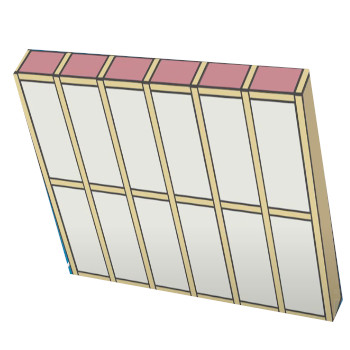
It should be flush with the bottom and top of the rafters. Next, sheets of insulated plasterboard should be placed with the long edge running across the joists or rafters.
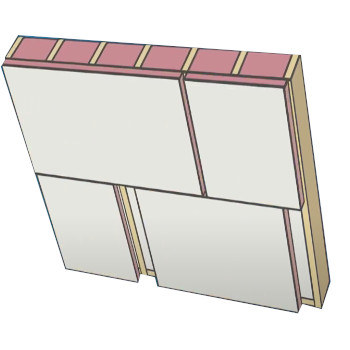
Where joints between sheets of insulated plasterboard are unsupported by the timber joists or rafters, timber noggins should be installed.
Insulated plasterboard sheet joints should lap joists, raters or noggins by at least 19mm.
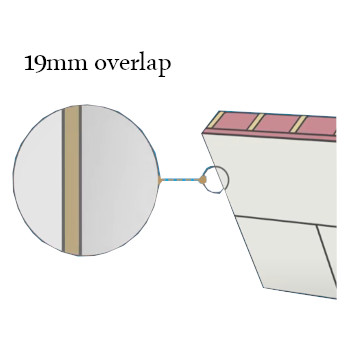
Each sheet should be tightly butted and fixed using drywall screws or large-headed galvanised clout nails
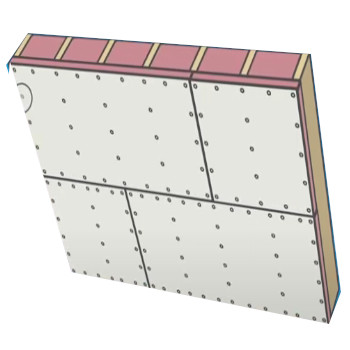
Fixings should allow at least a 24mm penetration of the timber and should be located no less than 10mm from the bound edges of the sheet. They should be driven straight, with the heads embedded just below the surface of plasterboard. Care should be taken not to overdrive nails or screws.
CONCLUSION
Properly insulating a pitched roof from the inside is crucial for creating an energy-efficient and comfortable home. By following the valuable tips outlined in this blog post, you can maximize the efficiency of your roof insulation project.
First, consider the different methods available, such as insulating between rafters, insulating under rafters, or using spray foam insulation. Choose the method that best suits your needs and aligns with the specific requirements of your roof structure.
Next, select the right insulation material for the job. Options like phenolic boards, PIR boards, or mineral wool each have their advantages and considerations. Ensure you choose the material that provides optimal thermal performance and suits your budget.
Remember to pay attention to proper ventilation to prevent condensation issues. Maintain sufficient airflow within the roof space by keeping vents unobstructed and allowing for air circulation between the insulation and rafters.
Lastly, prioritize moisture control throughout your home. Utilize dehumidifiers or ensure adequate ventilation in the main living areas to minimize excess moisture, reducing the risk of condensation.
By implementing these valuable tips, you can create a well-insulated pitched roof that not only saves energy but also enhances the overall comfort and livability of your home. Enjoy the benefits of a more efficient and sustainable living space while maintaining a healthy indoor environment.
Bibliography:
- youtube.com, Kingspan Insulation UK,‘How to full fill insulation between and under rafters in a pitched roof’,accesed 7 July 2023
Related articles:
HOW TO PROPERLY INSTALL INSULATION BETWEEN RAFTERS: A STEP-BY-STEP GUIDE
SUSTAINABLE AND AFFORDABLE: KINGSPAN ALTERNATIVES AND EQUIVALENTS THAT WON'T BREAK THE BANK
MASTERING THE ART OF CUTTING CELOTEX AND KINGSPAN INSULATION BOARDS: TECHNIQUES, TOOLS, AND SAFETY
A COMPREHENSIVE GUIDE TO INSULATED PLASTERBOARD FOR CEILING INSULATION
INSULATED PLASTERBOARD: FINDING THE SWEET SPOT FOR OPTIMAL THICKNESS
*All the information provided in the content published on Insulationgo blog is for informational and educational purposes only. Insulationgo LTD makes every effort to ensure the accuracy and timeliness of the content, but we do not assume any responsibility for any errors or omissions.
The information presented on this blog should not be considered as professional advice or a substitute for consulting relevant experts. Before making any purchase decisions or taking action based on the information presented here, it is strongly recommended to contact the product manufacturer directly to verify the details and ensure its suitability for your specific needs.
By using this blog, you acknowledge and agree that Insulationgo LTD shall not be held liable for any damages, losses, or inconveniences arising from the use or reliance on the information provided herein. This limitation of liability applies to all users of the blog, including but not limited to visitors, readers, and subscribers.










































































































